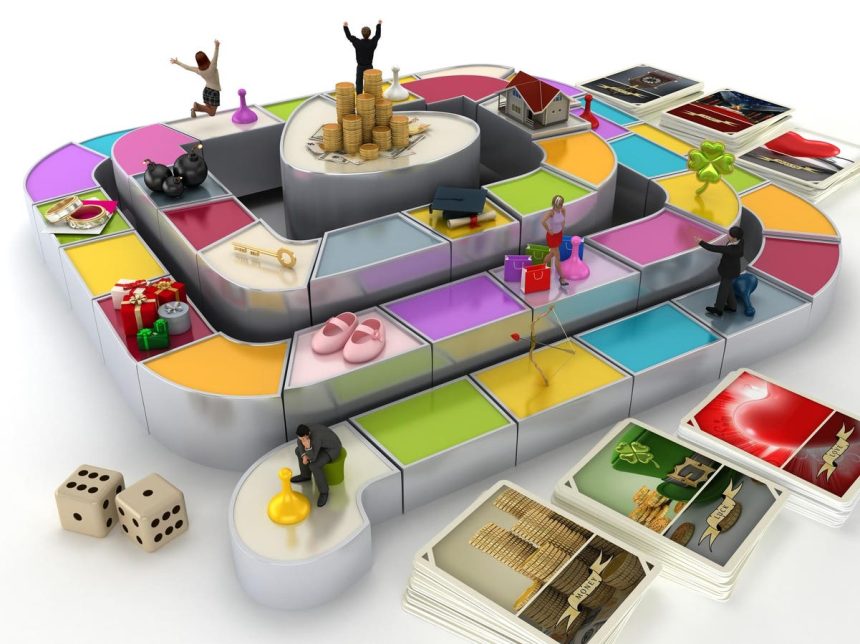Jason is the CEO of Sozo Labs, focusing on building VR and immersive apps that deliver real business value for their customers.
Remember gamification? It took the business world by storm about 10 years ago and was one of the biggest buzzwords in the industry. You might remember it as a polarizing word, some touting its brilliance and others disillusioned or shrugging their shoulders. Since then, it seems to have faded away into the background…or has it?
Many people believe gamification is an offshoot of gaming, one where you use all of the tactics and mechanics that video games use to hook players and adapt these to customer experiences and processes within our companies. Accumulating points, earning badges and climbing leaderboards can seem very meaningless. And if that’s the perception, then maybe gamification is dead.
But if I used the term “behavioral science” or “behavioral psychology,” you might think we’re having a different conversation. We’re not. The truth is gamification (when done correctly) is all about changing behavior. Look around you, and you might see that gamification is everywhere. It’s in how we foster loyalty with our customers, attract new clients, motivate our employees and even gain a competitive advantage. In other words, it’s about understanding what motivates people. You might not see it, but many companies do and are reaping the rewards of it.
If you want to drive positive behavioral change in your customers and employees, then gamification means making the process fun, purpose-driven and impactful. Let’s look at an example of how gamification has been used well and another of how gamification has been used poorly.
The Good
Many of us look in the mirror and wish we could lose some weight. The simple directive is to say: “Get out there and exercise, eat healthy and you’ll see the results!” If it were that simple, everybody would have six packs, but they don’t. It’s difficult to sustain motivation for the long term when we don’t see short-term gains. To begin their transformative journey toward health, many people need motivation in the form of quick wins that leave them wanting more. This is why I believe apps like Noom, which use nudges, have been so successful. Nudges keep people invested with short-term rewards and encouragement until long-term changes can be seen (improved health and well-being). Then, intrinsic motivation becomes a more dominant driver because of loss avoidance.
The Bad
Points-based systems are an example of how gamification can be used poorly. Often used by airlines and retail stores, the premise is that if you buy from a company, it will offer points that can be spent with it in the future. This might sound motivational, and this is a form of gamification, but in my experience, this approach often doesn’t work. Why? Points, and the overly sophisticated and complex loyalty programs they are usually linked to, mean nothing to most of us. From not knowing how to redeem points to understanding their actual worth, they are often complex, not fun and impossible to understand. That’s because this strategy is not about real loyalty and positive behavior change; it’s about dangling a very unappetizing carrot.
Some companies appear to have cottoned on to the pitfalls of points. Uber, for instance, seems to have remedied its points-based system by introducing Uber cash. From my perspective, the company understood the power of simplifying the process by using something people are familiar with: cash. It is also leveraging an open spending ecosystem where users can spend across Uber products and affiliate partners, thus providing personalized options but still creating brand stickiness.
So, how do you take advantage of gamification for your customers and employees?
1. Get the basics right first.
Gamification can’t fix a process that isn’t working. If the process isn’t adding clear value, it doesn’t matter how many gamification elements you try; it’s bound to fall flat. Before applying gamification, consider the process you will follow and your desired outcomes. Only then should you focus on how (and if) gamification can elevate the experience.
2. Understand your customer.
Understanding your audience is critical, as is knowing that we are all different. Some of us are motivated by positive messages and activities (e.g., recycling because it’s the right thing to do for the planet). However, many people are motivated negatively and need negative motivation to drive behavior. Negative motivation elicits a sense of urgency that can be harnessed into behavior change and lead to positive outcomes (e.g., act now or miss out). So, when thinking about how you will drive engagement and positive behavior change, use a combination of negative and positive motivational elements.
3. Balance your rewards.
Don’t assume someone will do something because of the long-term benefits to your business or their lives. Start with short-term nudges and rewards while reminding them of the long-term benefits. For employees, the intrinsic goal could be their career, and the short-term goals could be rewards and recognition made visible.
4. Make them the hero of the journey.
Stories are powerful. Make your customer or employee the hero. Many businesses make the mistake of making it about themselves, but people want to know how engaging in your product or process will benefit them in simple language.
The next time you build a product or define a new process, think about how you’re making customers and employees the heroes. Consider the end goal (the intrinsic reason for their journey) and the nudges you need to sustain that daily motivation. When you know how to motivate your customers and employees to go on a journey, and sometimes that journey can be arduous, the seemingly insignificant things will keep them going. That’s gamification.
Forbes Business Council is the foremost growth and networking organization for business owners and leaders. Do I qualify?
Read the full article here










